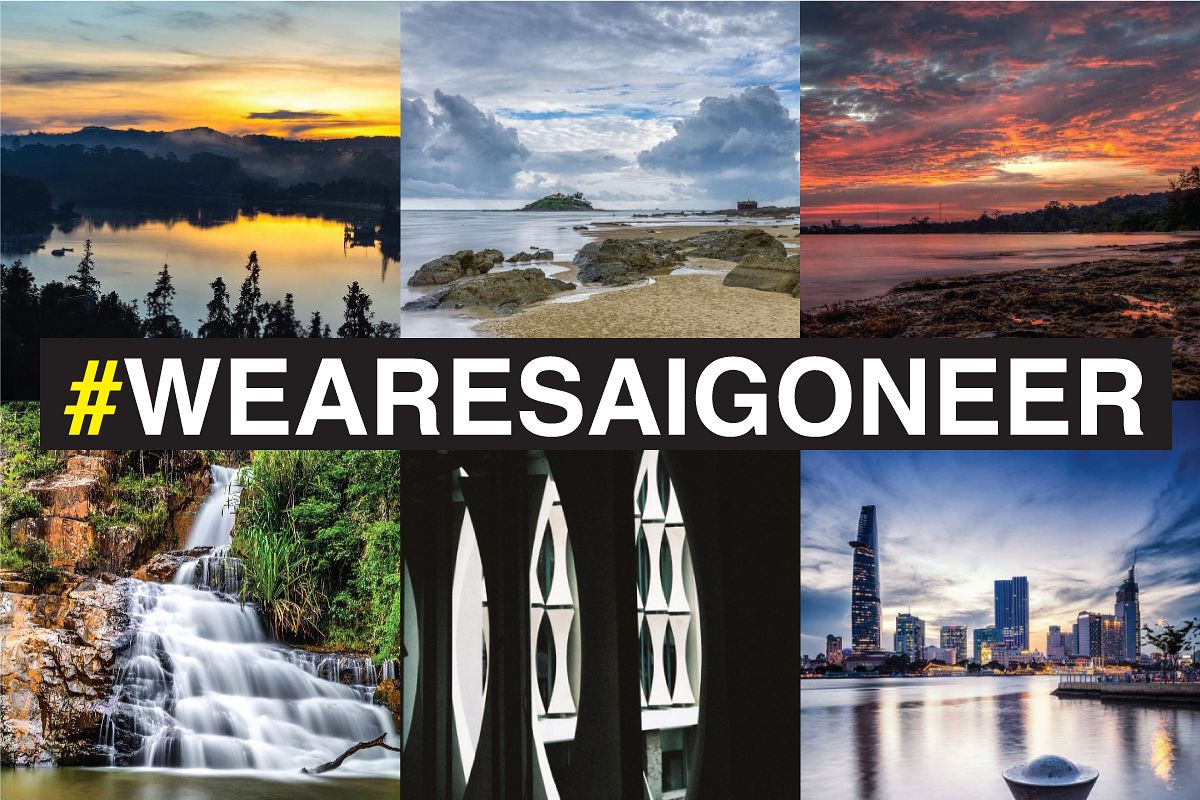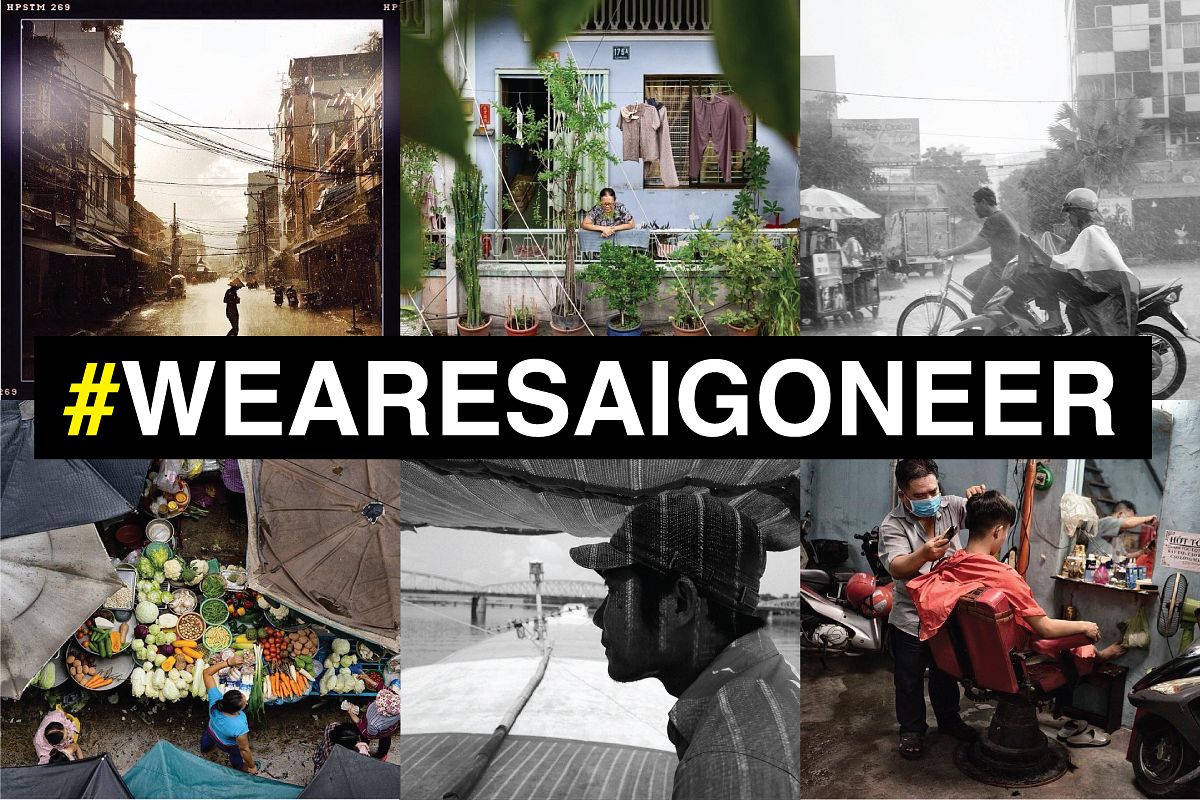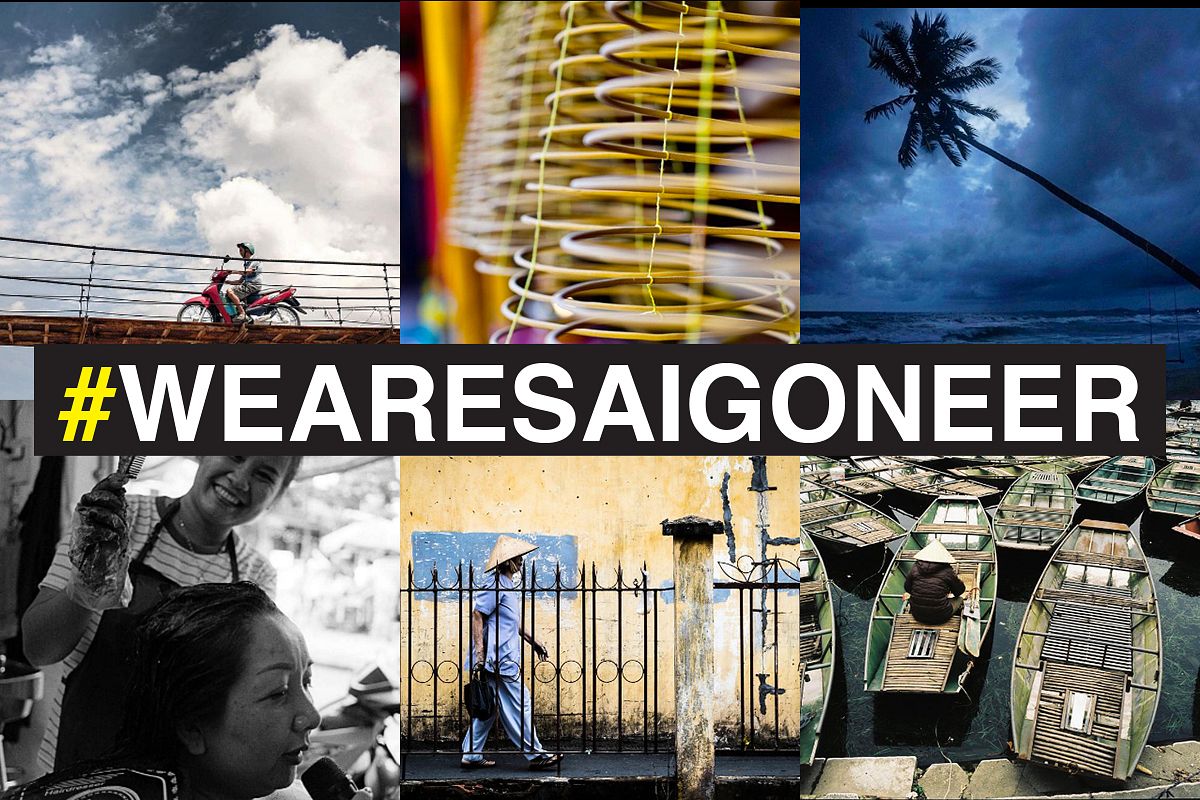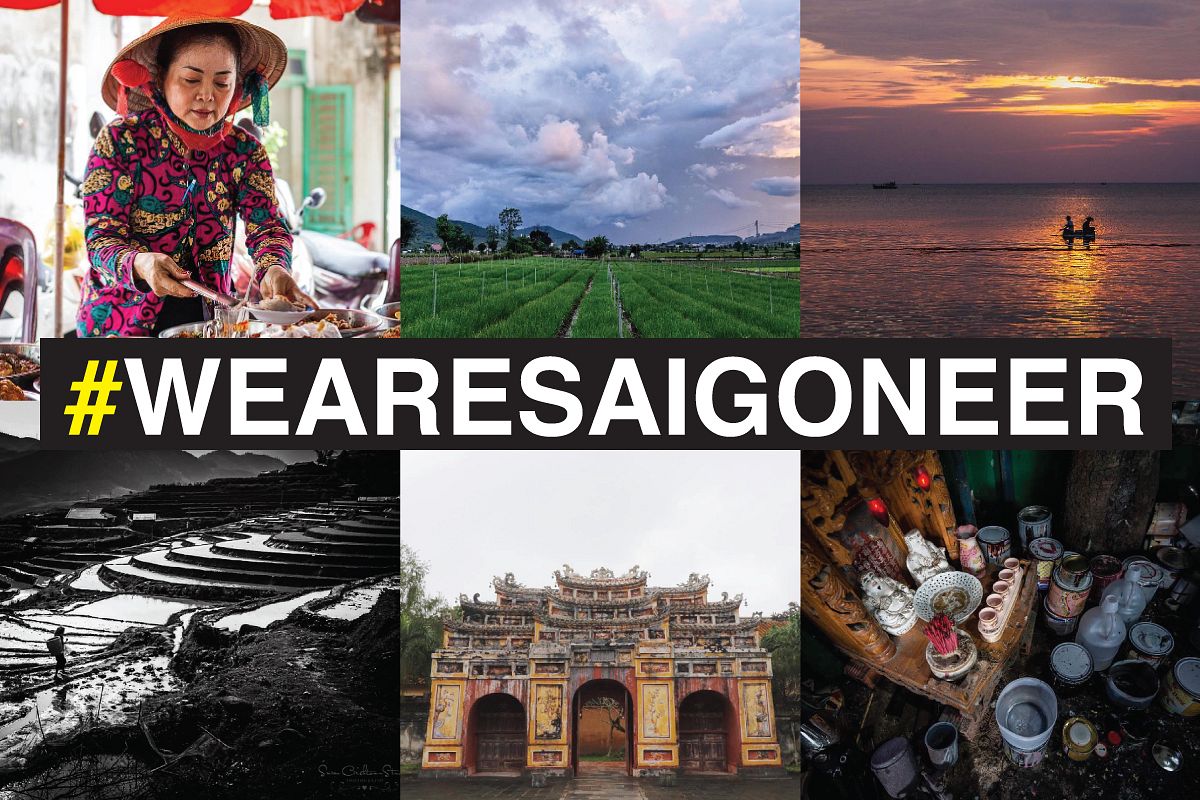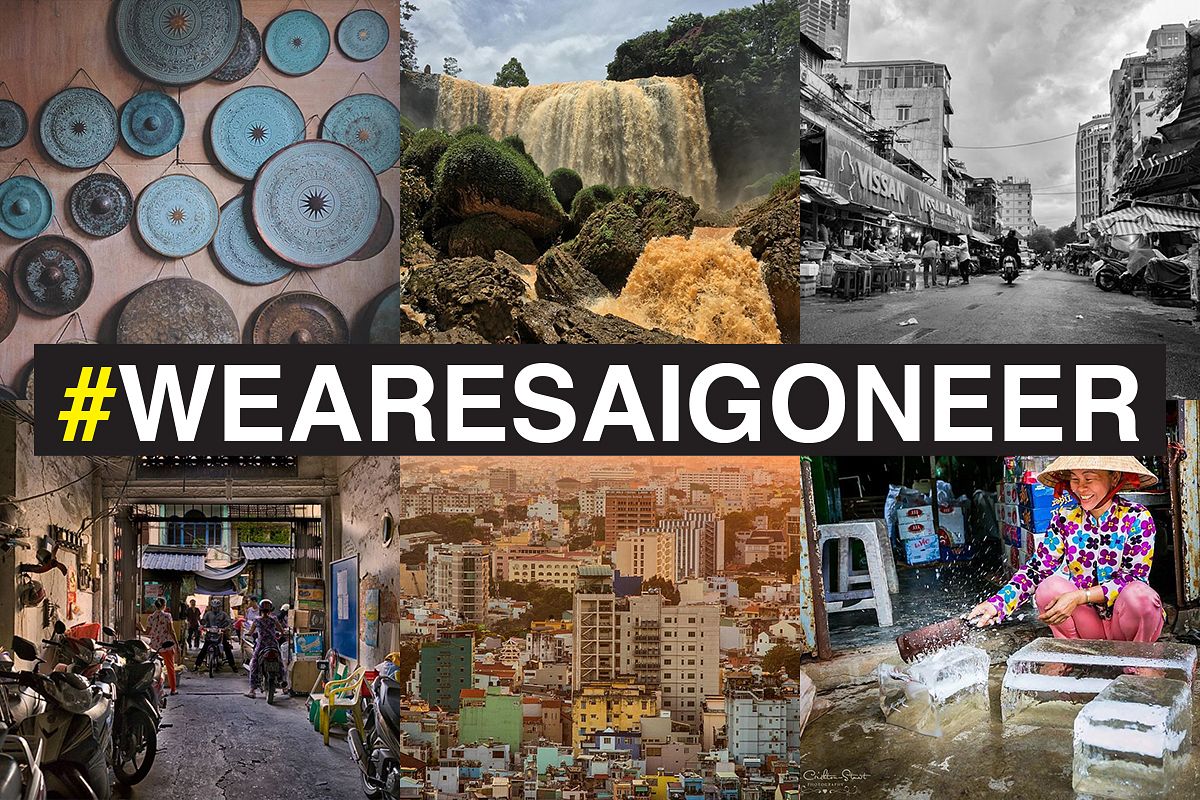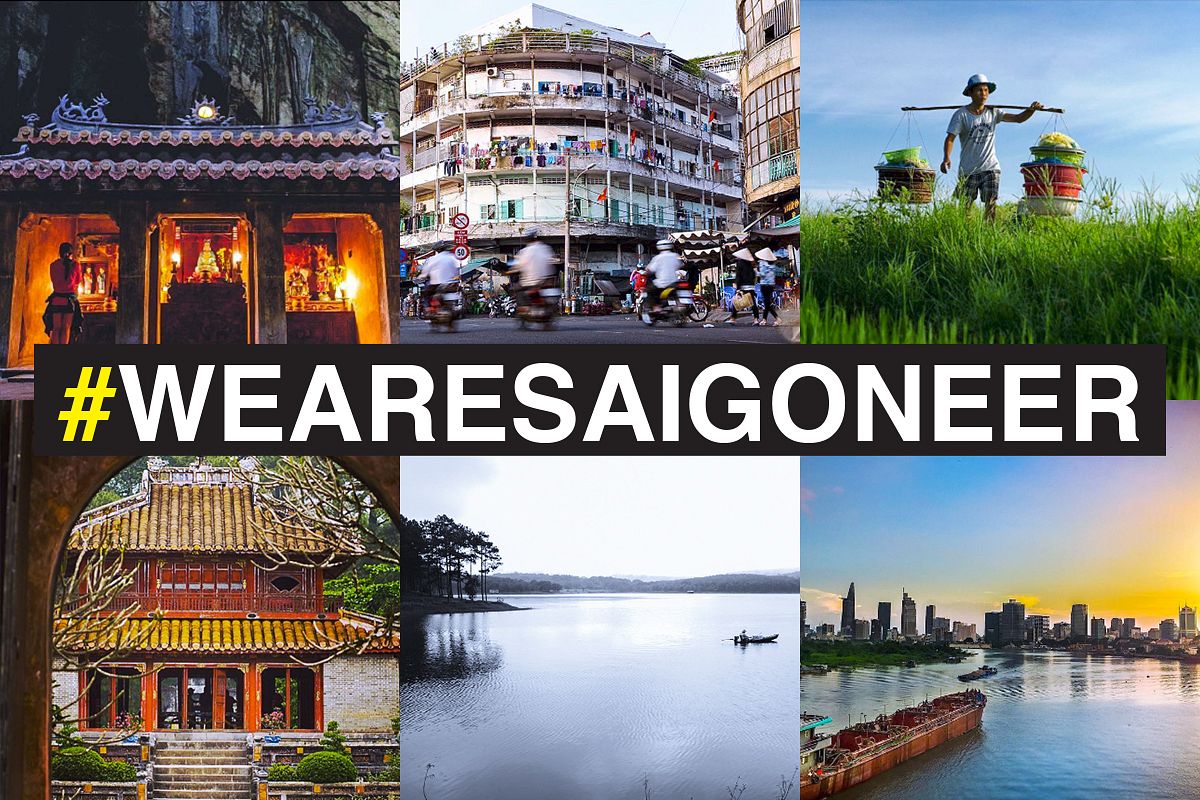There’s a noticeable generational difference between the way young and old Vietnamese converse.
Members of the younger generation, those who have grown up during the information age when English reigns, are well-versed in memes and tend to throw English terms around like they will go out of fashion tomorrow. Older Saigoneers, however, were educated during the country’s colonial period and thus heavily influenced by French or even Russian culture, right down to the words they use in daily chit-chat.
Such is the context of Pot-au-Phở, a street photography exhibition by Julien Brun and Nguyen Da Quyen. Their black-and-white works have been on display at Saigon’s TOONG Coworking Space for the last few weeks. The French-Vietnamese couple have been working on the photos from as early as 2011, but due to busy work schedules, the exhibition only became a reality this year, just in time for the 45th anniversary of Vietnam-France diplomatic ties.

Nguyen Da Quyen (left) and Julien Brun (right). Photo courtesy of Pot-au-Phở.
The name Pot-au-Phở is a portmanteau between phở and pot-au-feu (pot on the fire), a traditional French beef stew. The stew has been at the center of contention among lovers of Vietnamese food in recent years: some believe that it’s indeed the distant ancestor of phở while others think that because of its use of rice noodles, phở must have Asian origins, specifically from a type of Cantonese noodle dish.
For her part, Quyen is well-aware of the these debates. However, she believes the point of Pot-au-Phở isn’t to point out the difference, but to sit down and recognize the striking similarities between French and Vietnamese cultures. Moreover, phonetically “t-au-Phở” sounds like tô phở (bowl of phở) in Vietnamese, a perfect marriage of rustic home-cooking from both countries.

Visitors discussing the photos at the exhibition. Photo courtesy of TOONG.
Pot-au-Phở features a total of 60 mostly black-and-white photos, 95% of which were taken by Brun, according to Quyen. Each image captures a slice of daily life in Vietnam, from a butcher hanging fresh beef shanks to a colorful display of root vegetables at a local market to patched-up mannequins on the sidewalk. Apart from their aesthetic values from a street photography standpoint, these shots also contain “hidden messages” waiting to be discovered by visitors.
Through digital manipulation, Brun and Quyen kept certain objects in their photos in color while desaturating the setting. Viewers are encouraged to guess the Vietnamese word with a French origin that’s being highlighted. Did you know that bánh mì is the localized result of the French word pain de mie? Or that a lot of Vietnam’s vegetables still retain their French roots, such as cà rốt and carotte (carrot) or súp lơ and chou-fleur (cauliflower).
Looking at rows of neatly arranged photos in glass frames at TOONG, many might be surprised to learn that it took Quyen and Brun seven years to come up with the set of images on display. And it all started with a mundane conversation involving zippers.

The hidden word is ri-đô (French: rideau, English: curtain). Photo by Julien Brun, courtesy of Pot-au-Phở.
“About six, seven years ago, we had been going out for two years,” Quyen tells Saigoneer in Vietnamese. “I rarely speak Vietnamese in front of Julien, but one day he heard me say the word phéc-mơ-tuya [French: fermeture, English: zipper]. He said it sounded like a French word and asked if there are other words in Vietnamese like that.”
At the time, Quyen was only able to list a few dozen words and later took it upon herself to find out more. “It’s my nature, once I’m intrigued, I want to know everything,” she laughs. Before she knew it, her Excel file listing French loan words in Vietnamese was already 500 lines long, although Google was woefully lacking as a source on Vietnam’s lexicon.
The collection of 500-odd words eventually blossomed into a personal photography project, a common hobby that both Quyen and Brun could share. “We wanted to do it [taking photos of objects in Vietnam with French names] to create a gift for both our families in France and here.”
France's occupation of Vietnam left many remnants, some more obvious than others. Bánh mì, an affordable derivation of baguettes, is now enjoyed all over the country for its convenience and tastiness; Saigon’s crop of old colonial buildings – or what’s left of them – is also an important part of the southern metropolis’ heritage.

Visitors checking out the word list with their phone. Photo by Lao Minh Quan.
The presence of French words, on the other hand, has become such a seamless part of daily life that it’s often overlooked. For Quyen and Brun, the process of putting together the Pot-au-Phở project has been filled with constant discoveries.
“On one day of the exhibition, there was an old couple who came and asked me if I had a photo portraying the words ‘a-ma-tơ’ and ‘ma-cà-bông’ [French: amateur, vagabond],” she reminisces. “They also urged me: ‘Girl, you have to print a book [with the words] because if not, they will die.’”
Taking a stroll through the airy and sunny corridor at the exhibition, one can spot a range of reactions from visitors, from hushed giggles to quizzical looks. Occasionally, someone yelps and then quickly covers his/her mouth: they figured out the hidden word of an image. With 60 phrases covering several themes from food and beverage, transportation and construction to fashion and textiles, there’s something for everyone to get excited about.
Nonetheless, for Quyen, the most treasured experience gained from Pot-au-Phở was via a viewer from Nha Trang, who knew of the photography exhibition through a mention on national broadcaster VTV.
“She [the viewer] messaged me on Facebook asking where and when I took a particular photo,” Quyen explains. The photo in question is a scene right on Nha Trang’s windy Tran Phu Street. Three middle-age men are ambling along the footpath, wearing white undershirts. The hidden word here is maillot, meaning tank top in French and áo may-ô in Vietnamese.

Photo by Julien Brun, courtesy of Pot-au-Phở.
“I felt weird, but checked the metadata anyway and told her that the photo was taken on December 31 at 4:36pm,” she adds. “She [the viewer] revealed to me that the man in the middle with the hat was her late father, who passed away in 2012, and asked if she could have the photo.”
As it turned out, the family didn’t have any proper photo of him as keepsake due to the suddenness of his death. According to Quyen, it’s moments like the above-mentioned encounter that makes her feel glad to have put together Pot-au-Phở. Once the exhibition finishes, she plans to mail the copy of the Nha Trang photo that was on display to the female viewer’s family as promised.
“I actually sent her the soft copy of the photo already. The entire family and the mother were very happy. They were super delighted that he became such a ‘figure’ at the exhibition,” Quyen shares.
Pot-au-Phở photography exhibition will be open every day from 8am to 6pm until April 30 at TOONG Coworking Space at 126 Nguyen Thi Minh Khai, D3.


